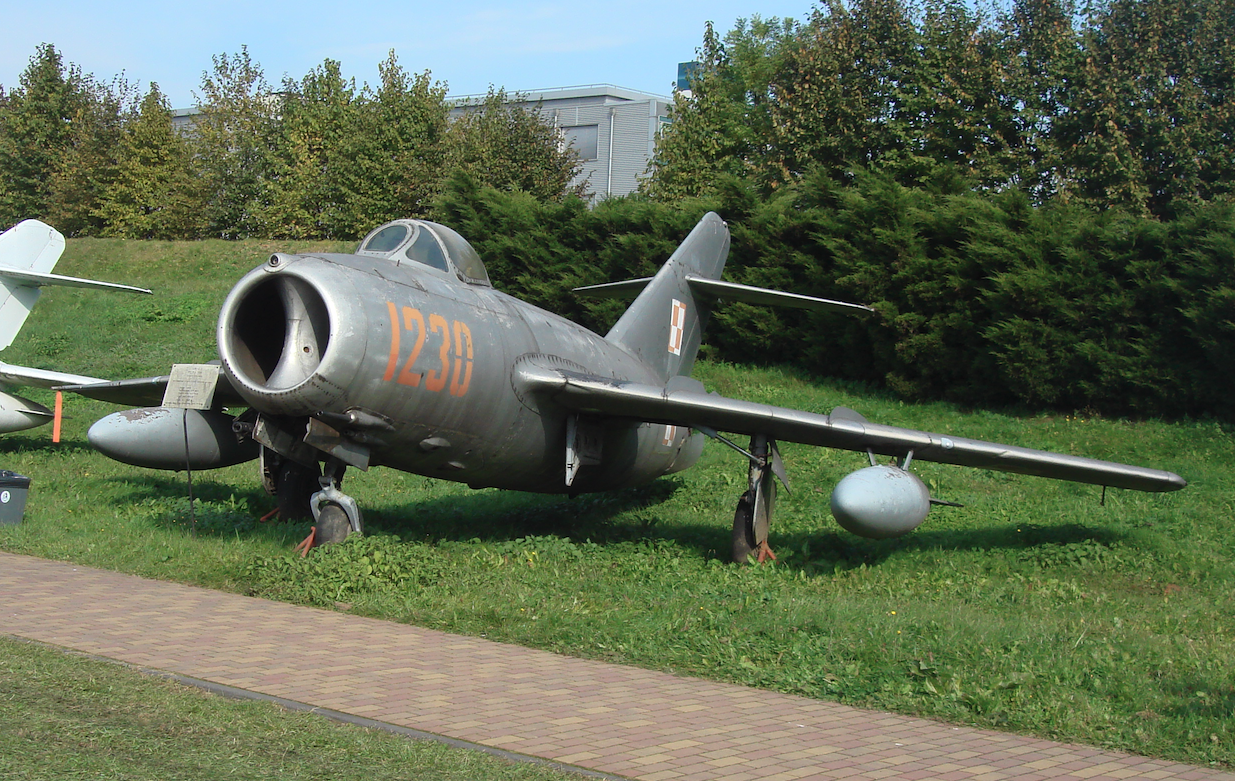Kraków 2007-03-16
History WSK PZL Lim-2.
117b Section 1954-09-17. WSK PZL Mielec Lim-2.
MiG-15 bis aircraft are improved MiG-15 aircraft. The main change was the use of a more powerful engine. The first MiG-15 bis aircraft in Poland appeared on January 23, 1953. Since PZL Mielec was producing Lim-1 (MiG-15) aircraft, it was decided to introduce MiG-15 bis aircraft into production, which in Poland was designated Lim-2. The first Lim-2 was produced on September 17, 1954. At the same time, production of new engines was launched.
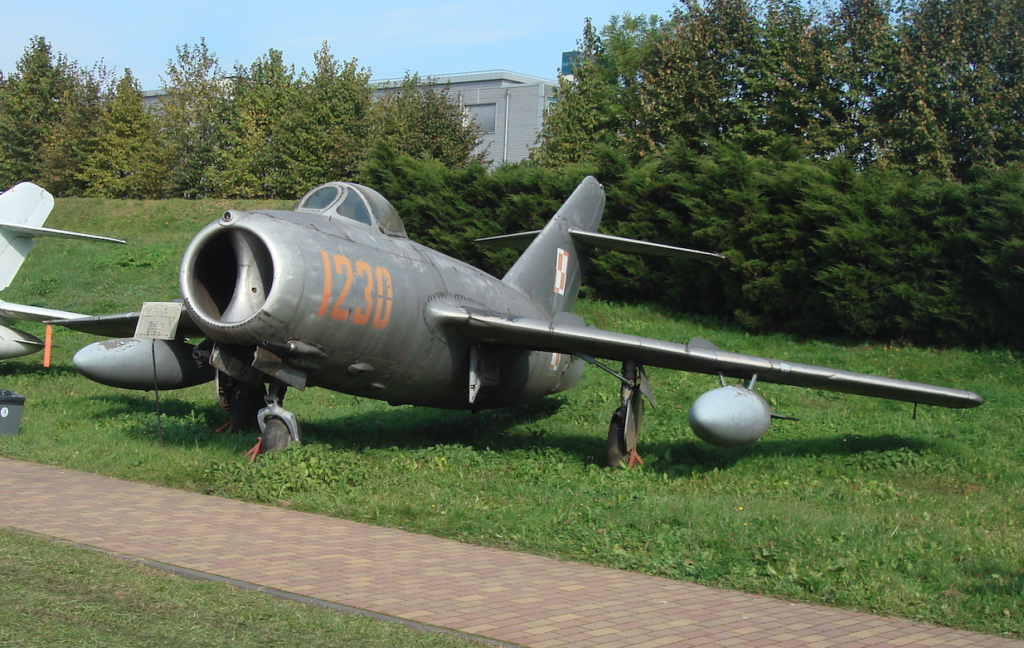
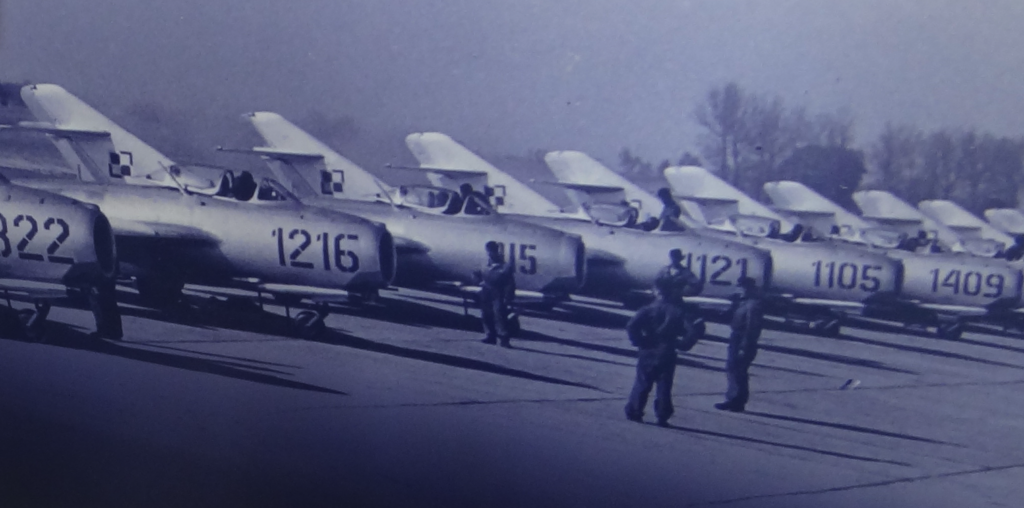
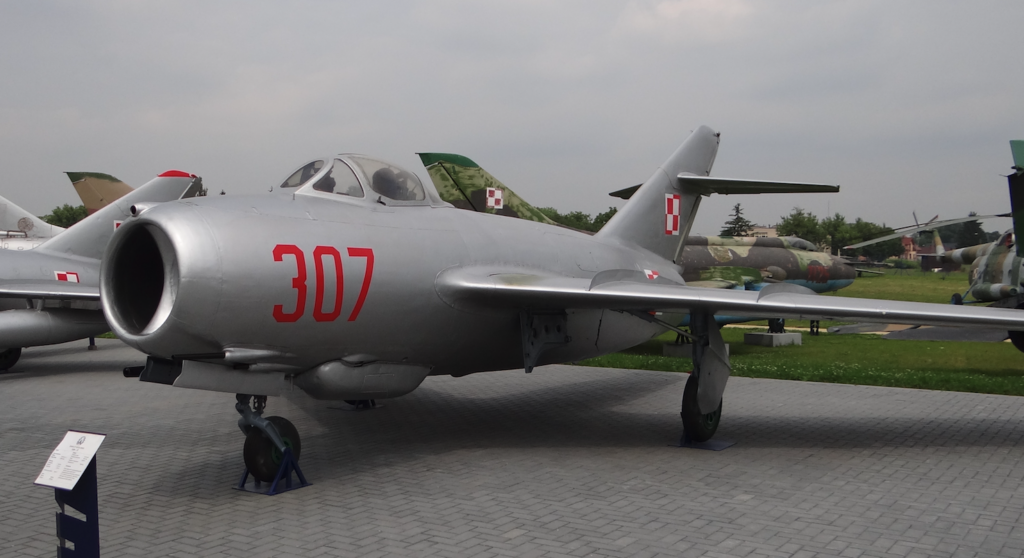
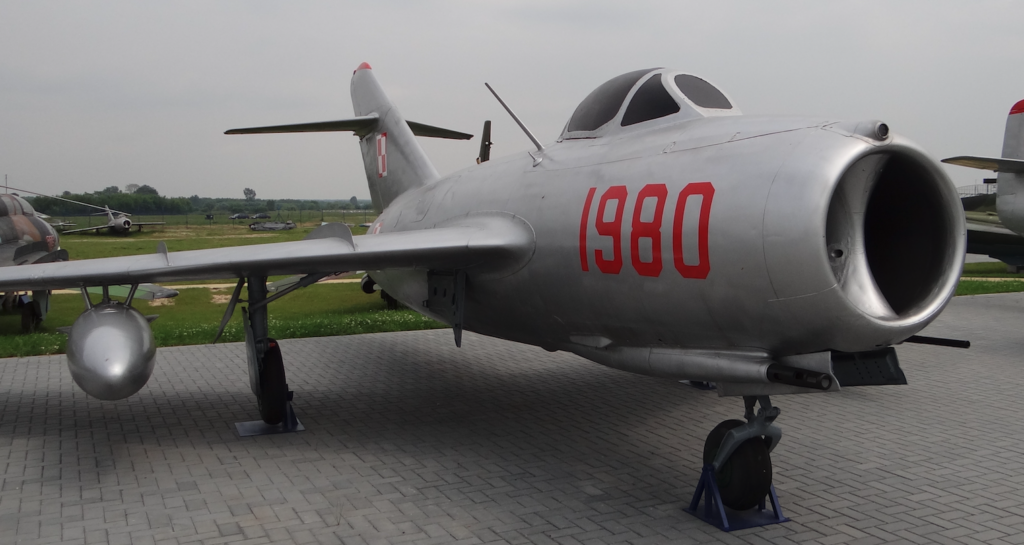
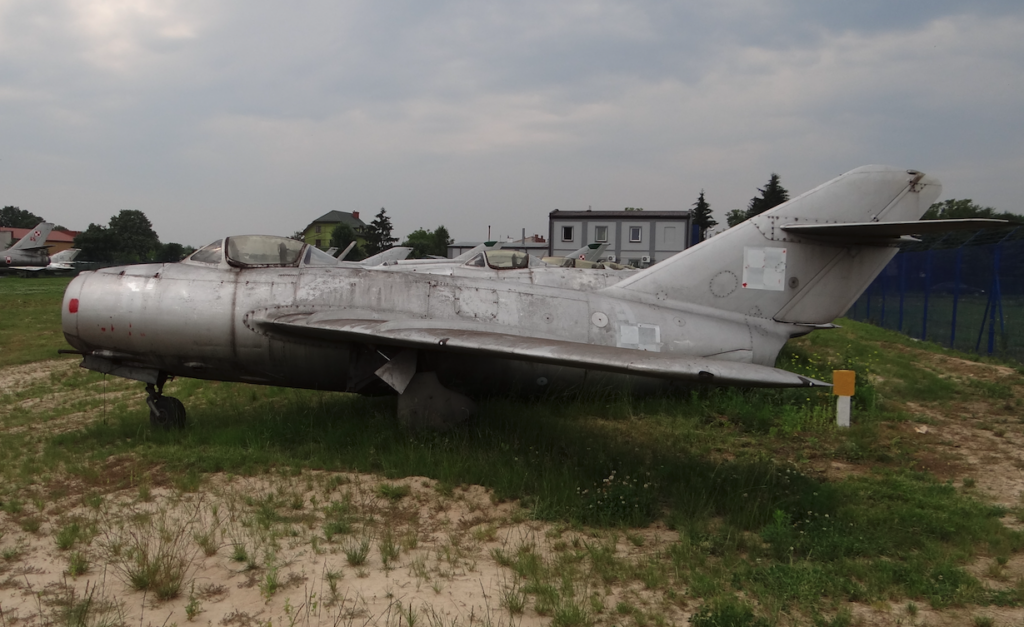
Despite the large-scale production of MiG-15 fighters, the Mikoyan OKB did not stop improving the aircraft. Information coming from the Korean War front was particularly helpful. The basic change was equipping the aircraft with a more powerful engine. Other changes concerned the modernization of the avionics equipment, as well as the installation of new devices not used before.
On January 23, 1953, the first MiG-15 bis fighters arrived in Poland. About 20 aircraft were to be used to familiarize themselves with the new fighter, improved in relation to the original. Most of the MiG-15 bis aircraft were placed in regiments located in northern Poland. The aircraft were introduced into the country’s air defense system.
WSK PZL Lim-2. 1954.
From the moment the new model appeared, the possibility of starting its serial production in Poland was considered. The reference model was the MiG-15 bis aircraft No. 1370086. After a year and a half of preparations, production of the MiG-15 bis was launched under the Polish name Lim-2. The first aircraft, with the factory number 1B 01-001, was rolled out of the hall on 1954-09-17, just 17 days after the end of production of the Lim-1. Production of the Lim-2 lasted until 1956-11-23. During this period, 530 aircraft were built in 20 series. Other sources indicate the number of 496 aircraft. The pace of production was impressive. At its peak, over 20 aircraft were built in one month.
Engine WK-1 A / Lis-2.
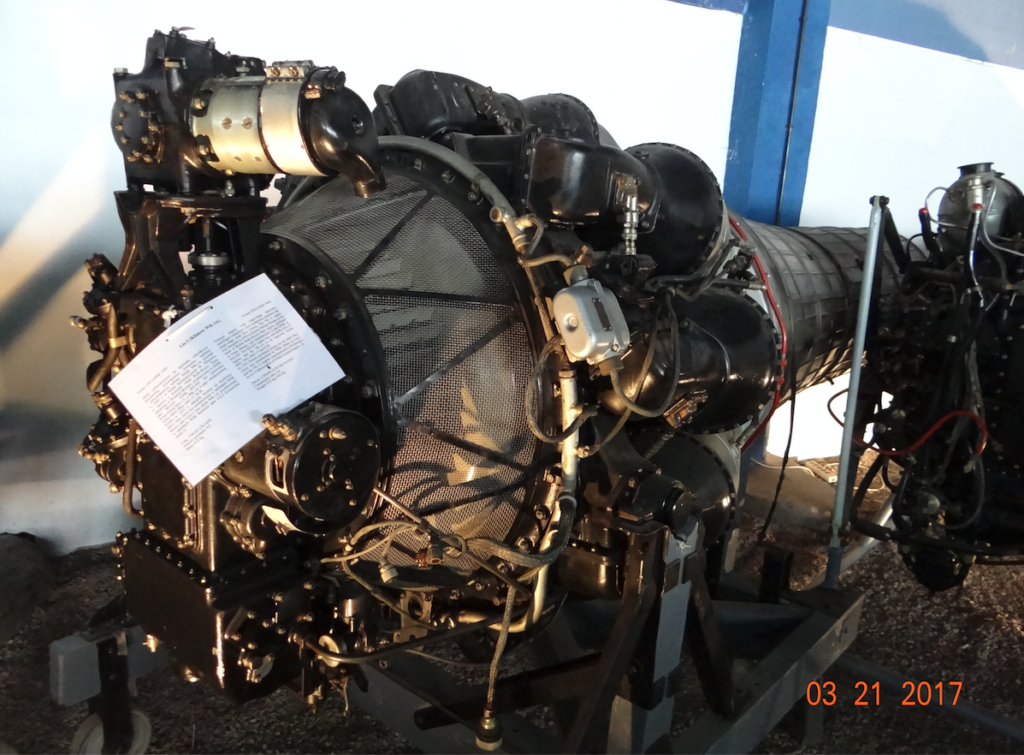
Simultaneously with the launch of series production of Lim-2 airframes, production of WK-1 A turbojet engines was started in Rzeszów, which in Poland received the designation Lis-2.
Lim-2 R.
In WSK Mielec, and later also in LZR (Lotnicze Zakłady Remontowe in Bydgoszcz) and in combat regiments, modifications were made to flying equipment. These modifications resulted from user comments, rationalization proposals and projects consisting in adapting machines to perform new tasks, such as reconnaissance or aerophotography tasks.
The effect of this work was the development of a special container with a set of AFA cameras, placed under a convex cover, in the lower part of the fuselage, behind the gun carriage with barrel armament. The aircraft received the designation Lim-2 R. The machines in this version were used by air support and reconnaissance regiments.
WSK Lim-1.5 (1.5).
Later, using the equipment available for Lim-2 aircraft (ARK-5 radio compass, RW-2 radio altimeter, SRU-0 and others), the LZR aviation repair plants in Bydgoszcz modernized some Lim-1 aircraft by installing these devices on them. The aircraft created in this way were unofficially called Lim-1.5 (1.5 m).
On some aircraft, both Lim-1 and Lim-2, a device for towing air targets for artillery was installed. This device was mounted in place of the rear 23 mm cannon. The device consisted of a drum with a wound line towing the air target.
Lim-2 “Smugacz”.
Of the other versions of the aircraft, it is worth noting the version called “Smugacz”. Polish fighters increasingly often took part in air shows for the public. The shows had an entertainment and propaganda character. In order to increase the attractiveness of the air show, it was decided to use the smoke trailing behind the plane. Initially, smoke candles were used. However, smoke candles worked for a short while, and once used, a candle was an unnecessary element. It was necessary to develop a device that would produce smoke exactly when the pilot wanted it to.
Such a device was developed by Lt. Col. MSc. Eng. Zenon Klimkowski. The aircraft’s fuel system was deprived of the rear fuel tanks in the aircraft’s fuselage. Two pressure tanks were inserted here. The first was filled with oil and was used to obtain white smoke, the second was filled with red emulsion and was used to obtain red smoke. The liquids passed through hoses to the injectors placed behind the engine turbine. The supply of liquids was enough to produce colored smoke for about 5 minutes, which was a very good time.
Lim-1/2 service.
Around 1955, almost all fighter regiments were equipped with Polish-made Lim-1/2 fighters. Piston-engined fighters were completely replaced. In addition, Yak-23 jets began to be withdrawn from service.
Lim-1/2 aircraft performed constant combat duty, often driving away NATO intruders trying to violate Polish airspace. Mainly on the northern line, i.e. the Baltic Sea area. But not only. There are known photos taken by Lockheed U-2 reconnaissance aircraft, which show Polish Lim-1/2 aircraft flying at a lower altitude. These photos prove two things. First, that our country was being spied on. Second, that we were able to track down the intruder and get the duty pair into combat, but we were unable to intercept the targets.
Another task that the Lim-1/2 aircraft encountered were propaganda balloons, many of which were released from the Federal Republic of Germany in the years 1952-1956 towards the east. These balloons were fought with the help of fighters.
The Lim-1/2 aircraft became very popular among the public. They were exhibited many times, made available to the public on the occasion of various exhibitions, equipment reviews or later placed as technical monuments.
In 1955, an original MiG-15 nb 26 was exhibited in front of the Palace of Culture and Science in Warsaw to familiarize the general public with this design.
The Lim-2 aircraft no. 1B 07-024 / 724 was first shown to the general public during the First Warsaw Air Show, organized at Okęcie on August 26 – September 9, 1956.
In mid-1956, at the initiative of the pilots of the 1st PLM, the first demonstration team (higher piloting) was formed using Lim-2 fighters. The personnel was as follows: captains; Zygmunt Dębowski, Jerzy Figurski and Ryszard Grundman. During the central celebrations of the Aviation Day on August 26, 1956, the team presented itself for the first time. The pilots performed a complicated set of aerobatic figures, with a particularly spectacular team barrel roll.
Air parade in 1957.
On September 8, 1957, an impressive aviation event was organized at the Babice-Bemowo airport on the occasion of the Aviation Day. The largest to that time, with the participation of an unprecedented number of aircraft. The parade consisted of two blocks of shows; a demonstration of aviation skills by civilian and military pilots and an air parade.
One of the program items was an impressive flypast of several hundred Lim-1/2 fighters, formed into a column of fours. Two other Lim-2s gave a demonstration of mirror piloting. One Lim-2 demonstrated a very impressive set of superior piloting figures. The next two Lim-2s demonstrated air combat using blank ammunition. The biggest attractions were given at the end; a team aerobatics of three Lim-2s under the command of Capt. Józef Sobieraj and five Lim-2s under the command of Capt. Józef Dębowski.
The entire event was attended by 260 combat aircraft. The most numerous were Lim-2 aircraft. It was the first parade in which the MiG-17 PF aircraft was demonstrated.
Air parade in 1959.
One of the tests of the training of the Polish Military Aviation was the air parade organized on the occasion of the 15th anniversary of the Polish People’s Republic. Commander Gen. Jan Frey-Bielecki decided to demonstrate aviation in the most magnificent way possible. An extremely interesting idea was born, but also difficult to implement. Only five days were allocated for preparation. Until then, the preparation period for parades was two weeks. At the airport in Bemowo-Babice, all the personnel planned to participate in the show were gathered.
The entire parade formed a column and consisted of 10 different groups consisting of over 200 aircraft. In order, the column was formed by; 1 – leader, 2 – four columns of 20 aircraft, each consisting of 5 four-plane rhombuses, 3 – 20 Il-28 aircraft, 4 – 16 Il-28 aircraft, 5 – the famous panel consisting of 64 Lim fighters (including 32 Lim-2), 6 – 16 Lim aircraft, 7 – 6 MiG-19 P aircraft in delta formation. The final touch was a demonstration of the MiG-19 P aircraft breaking the sound barrier by pilot Roman Operacz. The scale, spectacularity and precision of this parade resonated widely in Poland and abroad.
More demonstrations.
On 22.07.1960, on the occasion of the 550th anniversary of the Battle of Grunwald, a demonstration was held over the Grunwald fields. The panel consisting of 64 fighters, trailing trails of red or white smoke, was presented again. This time the formation was led by Lt. Col. pilot Władysław Hermaszewski. In September 1960, the panel was shown for the third time over Łódź. This time the formation was led, as on the first occasion, by Lt. Col. pilot Marian Bondzior.
On 22.07.1964, pilots from the Dublin School of Eaglets prepared a formation symbolizing the Roman numeral XX, consisting of 26 Lim-2s. The display was held on the occasion of the XX-PRL.
On 26.06.1965, over the Old Town of Gdańsk on the occasion of the Sea Festival, naval pilots demonstrated, among other things, the anchor arrangement on Lim-2 aircraft.
On 22.07.1966, on the occasion of the 1000th anniversary of the Polish State, 43 Lim-2 aircraft demonstrated the number 1000.
Institute of Aviation.
The reference model for Polish serial production MiG-15 bis no. 1350086 was transferred from WSK Mielec to the Institute of Aviation in 1957. The aircraft was registered on 18.09.1958 and given the civilian designation SP-GLZ. The aircraft was used at the Institute of Aviation as a flying aerodynamic laboratory. Many tests were carried out on it within the framework of various scientific and research topics. Among others, the TS-11 model, unmanned aerial vehicles, meteorological rocket recovery and others were tested. For example, during the study of meteorological rocket recovery systems, SPD-3, SP-3 bis, SPD-6 type containers suspended from universal under-wing locks were taken to a considerable height, then unhooked, and in free flight, braked in the final phase by a parachute, fell to the ground.
The aircraft was removed from the register of civilian aircraft on 4.11.1972, and transferred to the Museum of Aviation and Astronautics in Kraków.
Assessment of the Lim-1 / 2 fighter, MiG-15 / bis.
At the time of the introduction of the aircraft into production in Poland, it was one of the most modern, if not the best fighter in the world. When the American F-86 fighter reached its maximum flight altitude during the Korean War, the MiG-15 still had a reserve of 1,200 m. However, in those years, technological progress was very large and the aircraft aged quite quickly. From a good fighter, it became sufficient, and after a few years, obsolete.
However, in the Polish Military Aviation it played a special role. One can laugh that the Polish Aviation operated aircraft with the Lim-1 / -2 designation for so long. That the pilots flew on obsolete equipment. We remember how in the 80s young aviation enthusiasts could not get over the admiration that these machines were still flying. The reasons for this state of affairs can be divided into two groups and called them respectively, negative and positive. The former basically boil down to the lack of money to buy new equipment. The latter are evidence of how good the aircraft was. Of how successful and simple its design was. How quickly it was possible to restore combat readiness. It was an easy-to-fly, reliable, and economical aircraft. It proved itself perfectly in ground attack aviation. The longevity of the Lim aircraft, especially in the two-seater version, was also influenced by the lack of a training version of the MiG-17 and Lim-5/-6 aircraft. A huge argument, which we often forget about, was that all production, repairs and maintenance were carried out in the country. With the Lims, we were independent from abroad.
Written by Karol Placha Hetman

